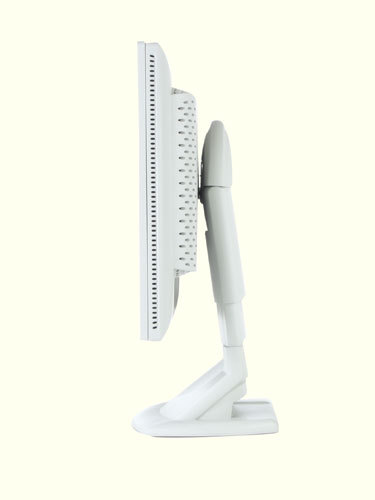Comparison Of 15" LCD Monitors - Part I
Philips 150 P2
In a word, the 150 P2 is a decent panel integrated into a practical, attractive case. Considering its price and its ergonomic design, this Philips is a rather high-end monitor compared to its rivals.
The monitor's first plus is a vertically adjustable base - a real boon to those of us who are too tall for other monitors. Of course, you can also lower the panel significantly, almost all the way down to your keyboard. This little feature will be greatly appreciated by the shorter among us, as well as those whose boss hasn't yet approved an adjustable chair.
We were even more wowed by the design of the base. Not only does it use a nice curvy design, but it's also pivot-enabled. Although we've already noted that the latter feature is only of limited interest for a 15" monitor, some aficionados might really get a kick out of it.
The panel is also well-equipped. The contrast ratio is outstanding, while it displays a wide range of color shades and hues. We only noted a slight weakness in the display of lighter shades.
However, the response time is a whole other ball game. Once again, we noticed that monitors listed as having a response time of 45 ms tend to lean more towards 50 ms than those listed as having a response time faster than 40 ms. It makes no difference whether you're gaming or surfing the 'Net - the afterglow is very obtrusive, to the point that it creates a doubly negative effect of both blurring and broken-up images.
You might expect a high-end monitor such as this one to come with a double DVI + RGB interface. You'd be right, even though there's no visible difference between images produced with DVI and those based on RGB (sorry, theory jocks!). Although a digital output eliminates the need to re-convert an already converted signal, thus theoretically improving the image quality, there's really no difference at all between the analog and digital outlets. We'll probably have to wait a bit until the contrast ratios of TFTs begin to rival those of CRTs. Then we should be able to discern some infinitesimal difference between the two.
Get Tom's Hardware's best news and in-depth reviews, straight to your inbox.


